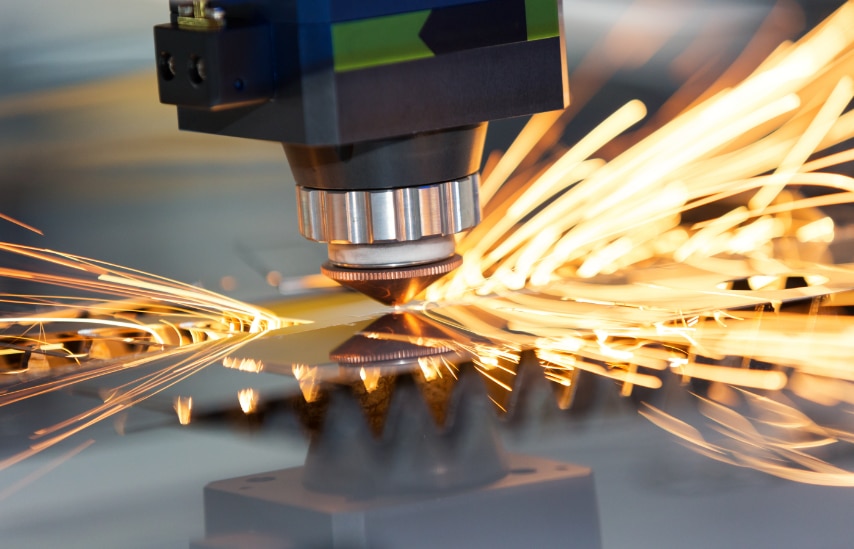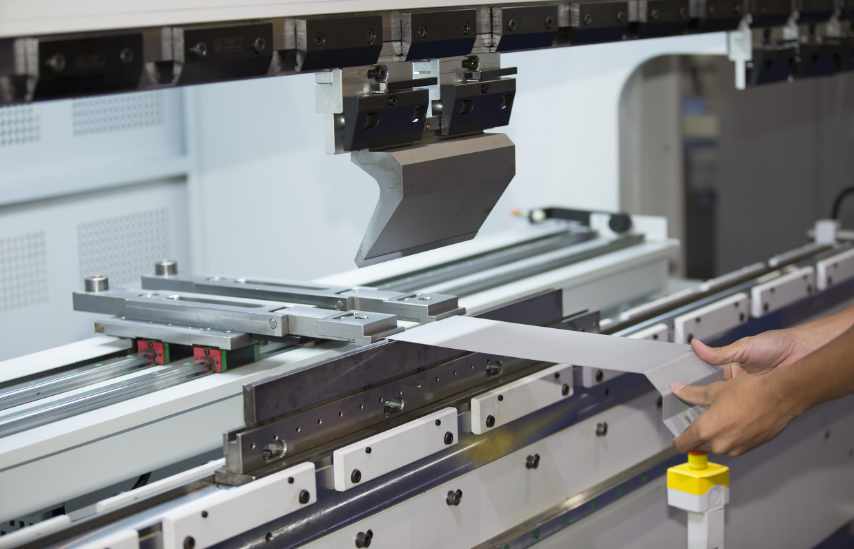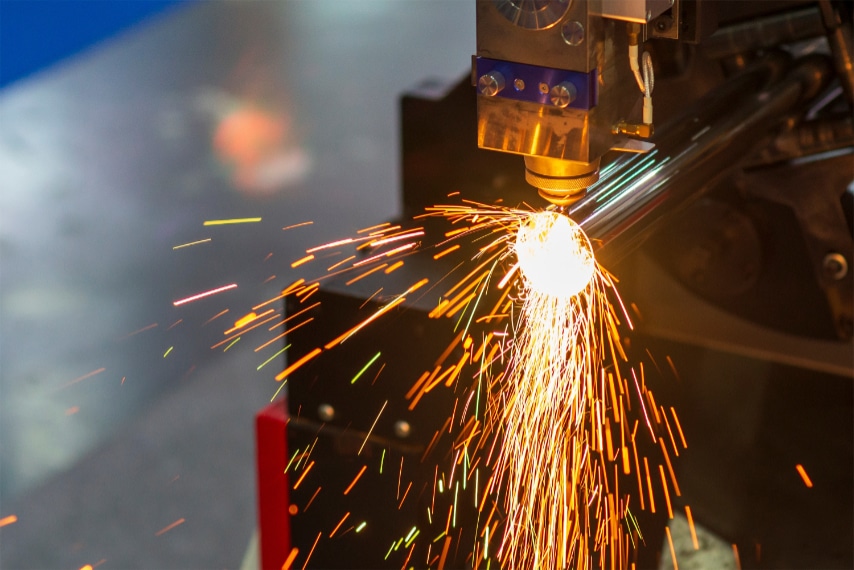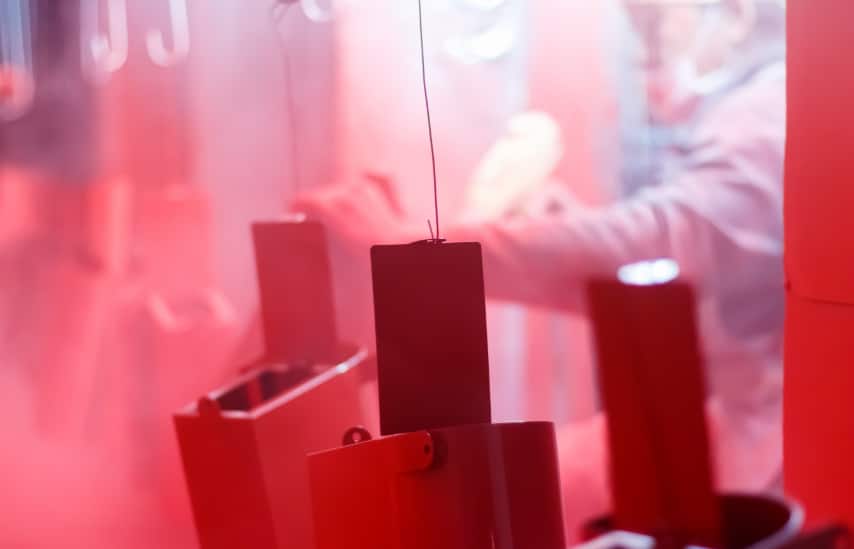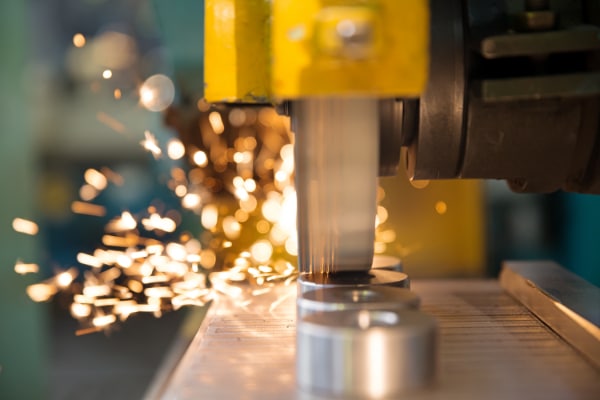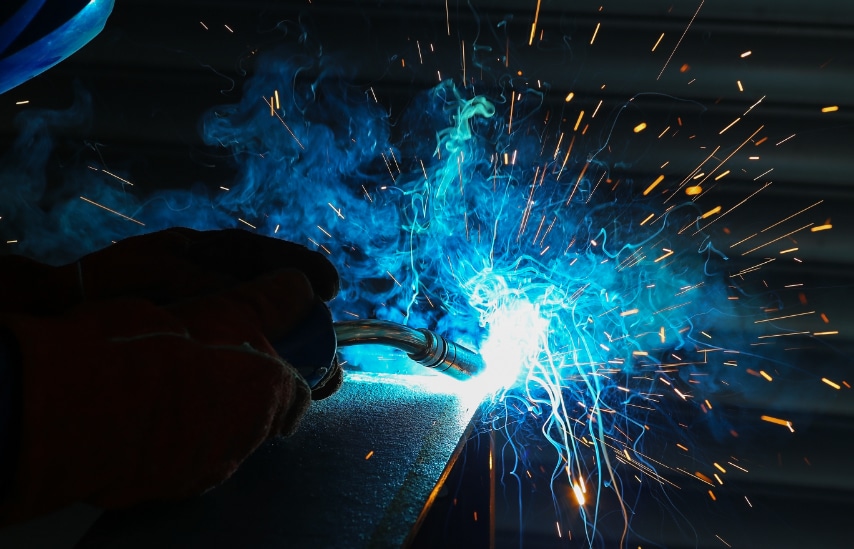How Does Sheet Metal Fabrication Work?
Metal fabrication is the process of creating structures using different metalworking techniques that are important in various industries for making a variety of products.
We’ve written an article that explains sheet metal fabrication in detail. Click here to read the article.
Different Types Of Sheet Metal Fabrication
Cutting
This process involves removing excess material from a metal sheet to create the desired shape or size using various tools such as shears, lasers, or plasma cutters.
Bending
During bending, metal is manipulated to create angles, curves, or shapes by applying force to deform the material without causing it to fracture or break.
This technique is commonly used to form components such as brackets, enclosures, and panels in various industries.
Punching
Punching in sheet metal fabrication involves using a tool to create holes or shapes in the metal sheet by applying force through a die.
The process is commonly used to produce precise holes and cutouts in sheet metal components.
Stamping
Stamping uses a stamping press and dies to shape a flat metal sheet into the desired form by applying force.
Design Considerations for Sheet Metal Fabrication
When it comes to metal fabrication, make sure that design considerations are meticulously planned to optimise the manufacturing process and achieve high-quality end products.
Material Selection
Consider the specific requirements of your project, when selecting your material. Different metals offer varying strengths, corrosion resistance, and formability.
Tolerances
Maintaining tight tolerances is essential throughout the design and production process to guarantee precision and accuracy. Tolerances refer to the allowable deviation from the intended dimensions of a part.
When designing for sheet metal fabrication, consider the material type, thickness, and manufacturing processes involved. Tighter tolerances may require more precise equipment and skilled operators but can result in higher-quality parts.
Designing for Manufacturability
Consider key manufacturing principles when designing your sheet metal fabrication project to ensure efficient production processes and high-quality results. Assure that your design allows for easy material handling, minimises the number of fabrication steps, and reduces the need for complex tooling. Simplifying shapes and avoiding intricate features can streamline manufacturing and lower production costs.
By designing for manufacturability, you can enhance the overall efficiency of the fabrication process and achieve a final product that meets your specifications effectively.
Understanding Sheet Metal Materials
Sheet metal materials such as stainless steel, cold-rolled steel, aluminium and copper offer unique properties that influence the performance of fabricated parts.
Stainless Steel
Stainless steel offers exceptional durability and corrosion resistance. It's a popular choice due to its strength and ability to withstand harsh environments.
Known for its sleek appearance and low maintenance requirements, making it a practical option for various projects. Its resistance to stains and corrosion makes it a reliable material for long-lasting structures and products.
Aluminium
This versatile material is valued for its lightweight characteristics and resistance to corrosion. It is extensively used in manufacturing for a variety of purposes. Its flexibility and ability to conduct electricity make it well-suited for multiple sectors such as aerospace, automotive, and construction.
Cold Rolled Steel
Cold-rolled steel offers enhanced strength and smooth surface finishes, making it a popular choice for various fabrication applications. Its improved surface finish makes it ideal for projects requiring a sleek appearance.
Copper
Excellent conductivity and corrosion resistance, make it a valuable material widely used in industrial applications. Its malleability and ductility allow for intricate designs, making it easy to work with.
Understanding Sheet Metal Finishes
Various finishes can be applied to metal. Common finishes like anodising, brushing, polishing, and powder coating serve both functional and aesthetic purposes. Each finish has its unique benefits, such as increased scratch resistance, improved weather resistance, and a more visually appealing surface.
Understanding the properties of different finishes can help you select the most suitable option based on the intended application and desired outcome. We’ve written an article that explains what finishes can be applied to metal. Click here to read the article.
Our knowledgeable and experienced team can help you choose the most suitable metal finishing based on your product application and budget.
Benefits and Drawbacks of Sheet Metal Fabrication
When considering sheet metal fabrication, understanding the pros and cons will help you make informed decisions in your sheet metal fabrication projects.
Benefits of Metal Fabrication
Quick Turnaround Times
Making it ideal for prototyping and production. The high-quality parts produced are durable and exhibit a high strength-to-weight ratio, suitable for various applications.
Versatile
A range of materials can be used, for example, different metals like steel aluminium and copper can be used.
Customisation
Create custom parts and components tailored to specific requirements and designs.
High-Quality Parts
By utilising precision cutting, shaping, and welding techniques, precise and durable components can be manufactured and used in various industries.
Cost Effective
Metal fabrication is cost-effective because it allows for precise customisation and efficient production processes, resulting in reduced material waste. Additionally, the durability and longevity of metal products can lead to long-term cost savings by minimising the need for frequent replacements or repairs.
At Wrekin Sheetmetal, our production process is designed to operate lights out, even, allowing for faster production of your components and reduced lead times.
Drawbacks of Metal Fabrication
Cost & Complexity
Creating intricate designs may lead to increased expenses due to the need for specialised equipment and trained professionals. These complexities can result in longer lead times compared to simpler designs, impacting project timelines.
Skilled Labour Is Required
Due to the precision and expertise needed to work with various metals, skilled labour is required. This can lead to higher labour costs and potential delays if skilled workers are not readily available.
By partnering with a subcontract manufacturer like Wrekin Sheetmetal, you can prevent this issue. You can trust our skilled team, backed with experience and training, to manufacture and deliver a product or component you desire.
Industries that use Metal Fabrication
Various finishes can be applied to metal. Common finishes like anodising, brushing, polishing, and powder coating serve both functional and aesthetic purposes. Each finish has its unique benefits, such as increased scratch resistance, improved weather resistance, and a more visually appealing surface.
| Industry | Examples of components that can be made | Features |
| Automotive | Chassis, frames, body panels | High precision, durability, corrosion resistance, suitable for harsh conditions. |
| Aerospace | Fuel systems, landing gear | Compliance with industry standards, corrosion resistance. |
| Medical | Medical tables, devices | Anti-microbial, durable, easy to clean |
| Agricultural | Plows, seeders, storage containers | Durability, corrosion resistance, |
| Electronics | Enclosures, brackets, heat sinks | High-quality, provide optimal performance. |
In summary, our comprehensive guide on sheet metal fabrication design has discussed the key aspects that are important for starting any fabrication project.
By considering these elements listed above effectively, you can optimise the fabrication process to not only meet but, exceed the specific requirements of various industries.
With two decades of expertise, Wrekin Sheetmetal provides comprehensive production services in-house, handling everything from manufacturing to assembly. If you are looking for in-house fabrication services, then get in touch today.
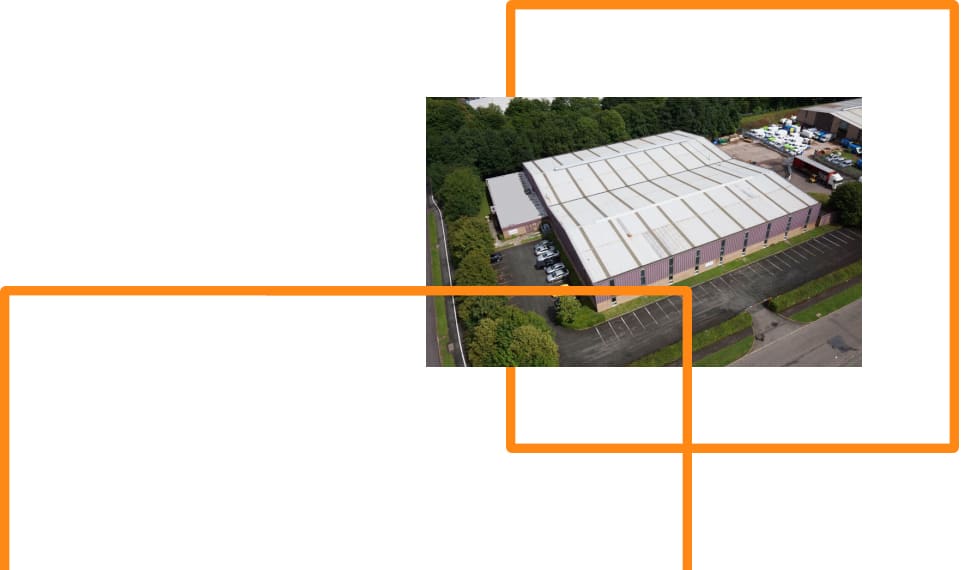
How can we help?
With over 17+ years of knowledge and experience, we’re confident we can offer a flexible solution beneficial to both parties, get in touch with us today.
